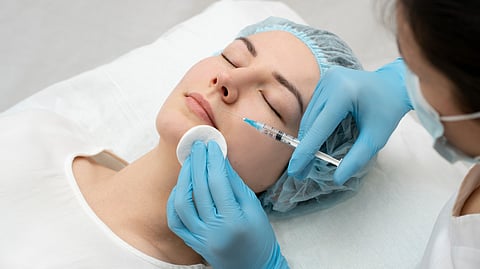At the clinic or hospital, nurses check vital signs and review medical history. A physical exam confirms readiness for plastic surgery or a breast lift.
The surgeon explains anesthesia options: general (deep sleep), IV sedation (relaxed, sometimes asleep), regional (numbs a large area while awake), or local (small area, fully aware).
An anesthesiologist administers the chosen medication. Minor treatments like facial fillers may occur in an office, not an operating theater. Cosmetic surgery typically includes cleaning the skin, marking areas, and double-checking everything to avoid surgical complications.
Patients are informed of possible risks and recovery time before the procedure, which can range from 30 minutes to several hours depending on the surgery.


